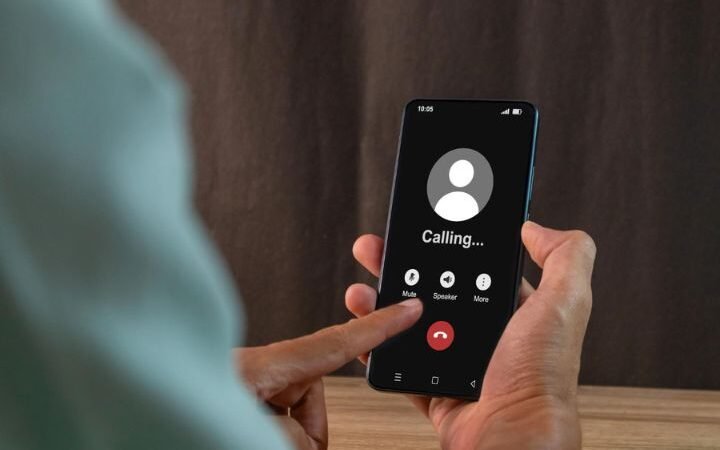How To Make An Advertising Campaign On Facebook Ads Step By Step

The Facebook advertising is the best performing activity that offers within social ads. As if that were not enough, you can create integrated campaigns for Facebook and Instagram using a single platform, which allows you to take advantage of the full potential of the network with more growth and engagement in recent years.
Together, advertising on Facebook and Instagram can be the ultimate push for your brand, so let’s see how they work so you can create your own campaigns step by step from scratch.
Facebook Advertising: Before You Start
1.Decide Your Goals
As with any other marketing action we take, we need to be clear about our objectives before launching an advertising campaign on Facebook.
Luckily, this tool has campaigns suitable for all phases of the funnel and many different types of needs. In general, Facebook distinguishes three types of objectives: recognition, prestige, and conversion.
Within the recognition objectives, we can find:
- Interaction with the publication: it seeks to encourage users to interact with a promoted publication. Ideal for enhancing our content strategy.
- “Like” the page: to increase the number of fans of our page on Facebook and thus have more potential audience for future publications.
- Local dissemination: ads intended to make your company known to people who are close to it.
- Brand awareness: to reach people potentially interested in your brand.
- Scope: here, the objective is to reach as many users as possible.
Among the ads focused on prestige or consideration, we have these possibilities:
- Website clicks: to bring quality traffic to our site.
- App downloads: ads focused on promoting a mobile app.
- Event responses: to get more people to attend a brand event.
- Video reproductions: oriented to disseminate your audiovisual content.
- Generation of potential customers: one of the most interesting formats, in my opinion, since you manage to capture leads without the need for users to leave Facebook.
And finally, we have the objectives related to the conversion :
- Conversions on the website: to contribute to the sales of your online store.
- Interaction with the application: ads focused on getting users to interact with your brand app.
- Offer requests: to promote specific offers.
- Sales of the product catalogue: a unique ad format is used here that automatically shows the products in your catalogue based on the target audience.
- Visits in the business: a goal that seeks to link ads on Facebook and visits to your physical stores.
2.Create The Necessary Content For Your Campaign
As we have seen in the objectives, advertising on Facebook can be linked to your content strategy, through promoted publications and videos. It is a new channel to help content gain strength and become more rapid, reaching a higher number of people in less time.
But even if that is not your goal, it is still necessary to create a series of materials to launch your campaign: a repository of images for the ads, copies adapted to the objectives of the campaign (watch out for the character limit) and, in your case, promotional videos of your brand.
3.Startup A Tracking System
In the world of advertising, we must have some way of measuring the return on investment (ROI) of our actions.
To know how our advertising is working on Facebook and Instagram, the first essential step is to install the conversion pixels, some segments of code that are included in your website, and serve to relate visits to it with Facebook ads.
- Step 1: Choose the “Pixels” option in the “Events Manager” menu.
- 2: Choose to create a Pixel.
- Step 3: Name your pixel and the web where you will include it.
- 4: When the pixel is created, Facebook will offer you three options to install it.
- Step 5: This is the way to install the pixel manually; you can also email the instructions.
- Step 6: Install the ” Facebook Pixel Helper ” extension so that from your browser, you can detect if the conversion pixel is correctly installed and jumps.
On the one hand, you have to include the universal pixel in all pages of your website. Besides, for each specific event, you will have to place the pixel code of that event on the specific pages where the related conversion is performed.
If you have access to your website code and know how to manipulate it, you can do it yourself. If not, you will have to ask a developer for help. Before launching the campaign, you must check that the corresponding conversion pixels work correctly.
Once everything is configured correctly, we will have to measure the results of our campaigns periodically. To keep up to date with what is happening and be able to make changes in real-time, it is advisable to consult your measurement panels at least once a day.
Data Analysis:
At the same time, we will also need to see the accumulated data every certain point to get an overview and better estimate the profitability. Data analysis can be done in two ways:
- Predictive analysis: usually used at the beginning of campaigns, when not enough information has yet been collected for an exact calculation. To estimate the profitability of the ad, what we do is assign a value to each contact achieved through the campaign. This value will depend on your profile and the estimated possibilities of converting.
- Deductive analysis: in this modality, we already have enough data to look back and understand what happened. Thus, we will see how many contacts have become customers and what has been the real cost of each one of them (cost of the ad among the number of customers captured).
How To Advertise On Facebook Step By Step
The advertising on Facebook is managed through the platform of Facebook Ads, with which we can insert our ads on Facebook, Instagram, and other applications. Let’s see how to do our first campaign step by step.
1.Create An Account And Campaign
To start, if we have not yet created our Facebook Ads account, we have to log in to our personal Facebook account and click on Ads Manager.
Once the Facebook advertising application is open, we will click on Create a new campaign and select the marketing objective that we have previously chosen.
Finally, we will select a name for our campaign. Try to be as identifiable and easy to search as possible, so as not to have problems when locating the campaign later.
2.Create The Ad Set
Here we reach the next level, the set of ads. Depending on the structure of your campaign, it may be necessary to create several.The first thing is to name the set of ads and, if applicable, choose where we want the traffic generated in this campaign to go: our website, our application, or Facebook Messenger. We can also create an offer, for example, to promote a discount coupon.
The next step is to select the audience we are going to. This is one of the most critical decisions we face since proper segmentation can mark the success of the campaign. We can reuse an audience that we have previously used or create one from scratch.
New Audience
If we create a new audience, we must configure the following options:
- Decide if we want to create a public from scratch, use a file with data from our customers or create an audience similar to another. Customer data files can come from an Excel, imported from Mail chimp or generated from our website, our app, offline customer activity, or their interactions on Facebook or Instagram.
- In case of creating an audience from scratch, the first thing is to choose the location. We can select a city or mark a point or several on the map. To refine, we can also define the radius around the position in question (the minimum is one mile). Here we will also choose the gender, age, and languages that our target should speak.
- We reach the most exciting part: the detailed segmentation. Here we can filter the public of our advertisement based on advanced demographic options (such as the level of training or the job position it occupies), interests (technology, food, sports and much more) and behaviors (a type of mobile, kind of consumer, buying behavior, travel). In short, you have a lot of options to choose from.
- Finally, we must choose if we want our audience to be connected in some way with other pages or applications.
Locations
Once the segmentation is ready, you have to decide the locations of our ads. By default, the system recommends using automatic placements (managed by Facebook), but it is more advisable to stop editing the list of locations. In particular, it is usually a good idea to disable the option to show ads on the Audience Network, since these are third-party sites and the quality is not as good.
Finally, we have to decide the budget and programming of the ad group. The most important options to configure are the criteria by which the ads are going to be optimized (I especially recommend the landing page visualizations) and if we are going to pay per impression or click.
3.Create The Ads
Here we have reached the last level of the structure of advertising on Facebook: personalized ads. To leave them ready, we will have to configure these options:
- The ad format: carousel, unique image or video, image gallery, or collection.
- The images of the ad: here, Facebook offers the option to choose from a series of default stock photos, but it is much more advisable to create our images.
- The ad text, the URL, and the call to action.
And ready! Our first campaign on Facebook is over. You just have to give “Confirm” for the system to review your ads and, if everything is correct, start showing them very soon.
The Essential Tricks To Improve Your Facebook Advertising
Know your audience.
To connect with the target audience, it is essential to establish proper segmentation. Only then can we succeed with campaigns that fit their interests and attract users with a good chance of converting.
Find a balance between ads and content.
Although we can make social media ads without having a presence developed on Facebook, it works best to combine both strategies: a fan page updated frequently and that shares the content of interest, and ads to reinforce these contents and achieve specific objectives.
Do tests:
Facebook advertising is an economic investment, so you have to find the best possible return. To optimize the results, my recommendation is that you do A / B or multivariable tests of all the critical elements of the ad: images, copy, call to action, In the same way, I encourage you to try different formats of Advertise until you find the most attractive to your audience.
Measure performance:
Facebook campaigns require continuous monitoring to monitor results and control costs. Luckily, in Ad Manager, you can find a wide variety of reports and metrics to keep track of how the campaign works and correct deviations in time.
Interact with your audience:
If you promote engaging content on Facebook, the logical thing is that they generate reactions among users. Make sure you are aware of the comments in your ads and answer your questions quickly.
Use the connections to influence the friends of your fans:
social proof is significant since there is a better chance of a user trusting their friends’ opinions than what they perceive as an advertising campaign. With Facebook advertising, you can take advantage of this social test through the connection options, for example, by launching a campaign among your fans’ friends.
Also Read : Digital Marketing | Study the Future | Learn Digital Marketing


